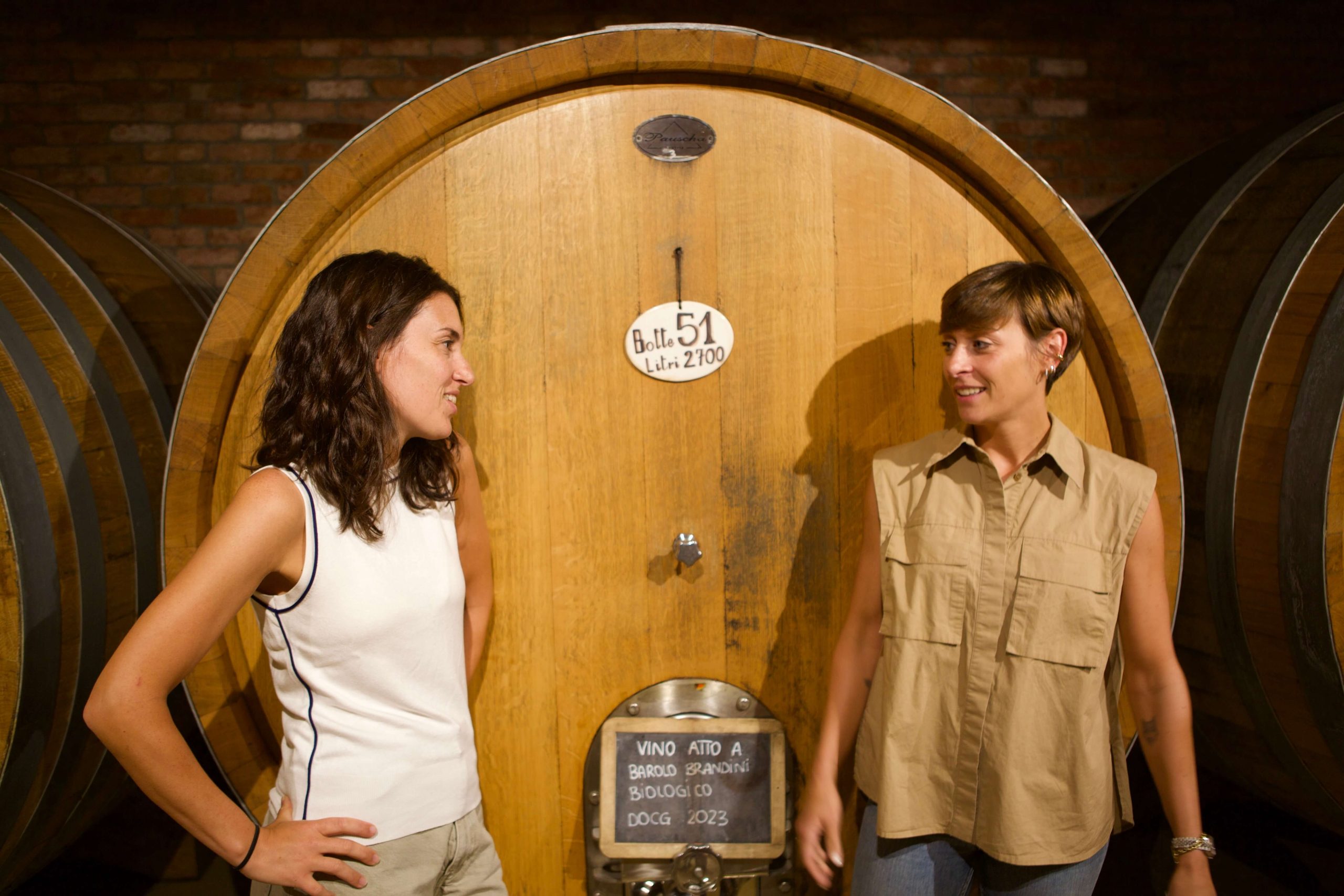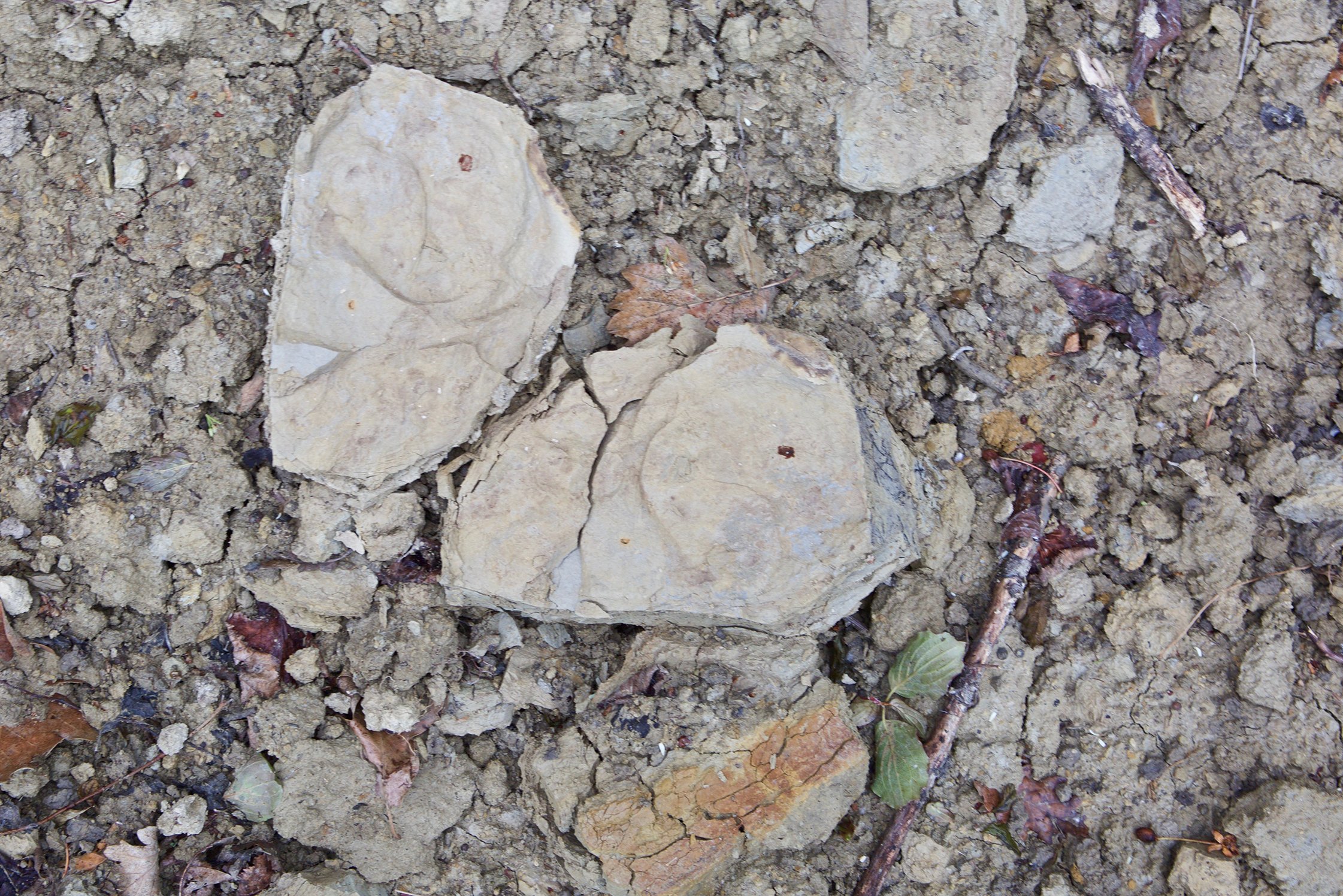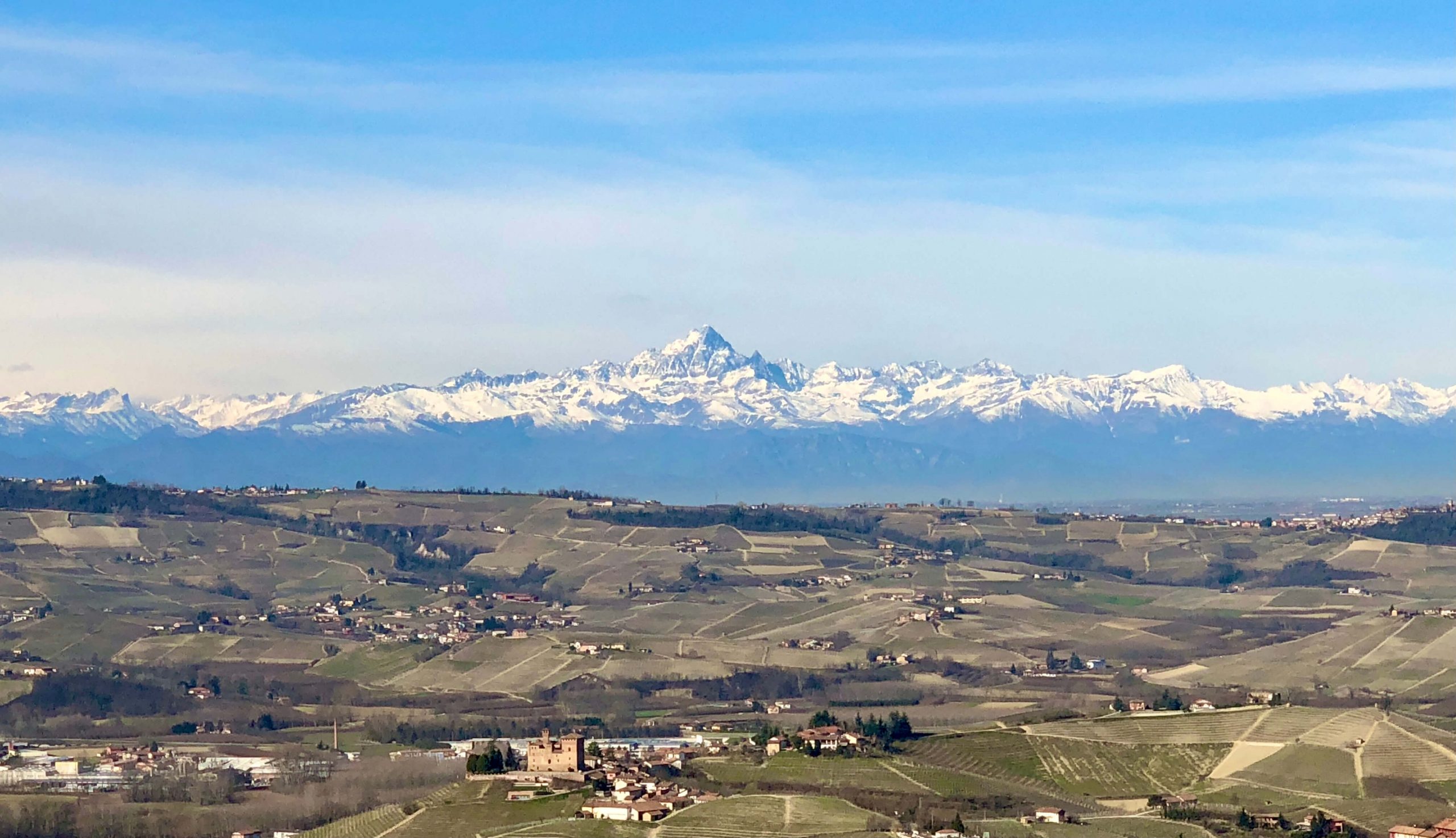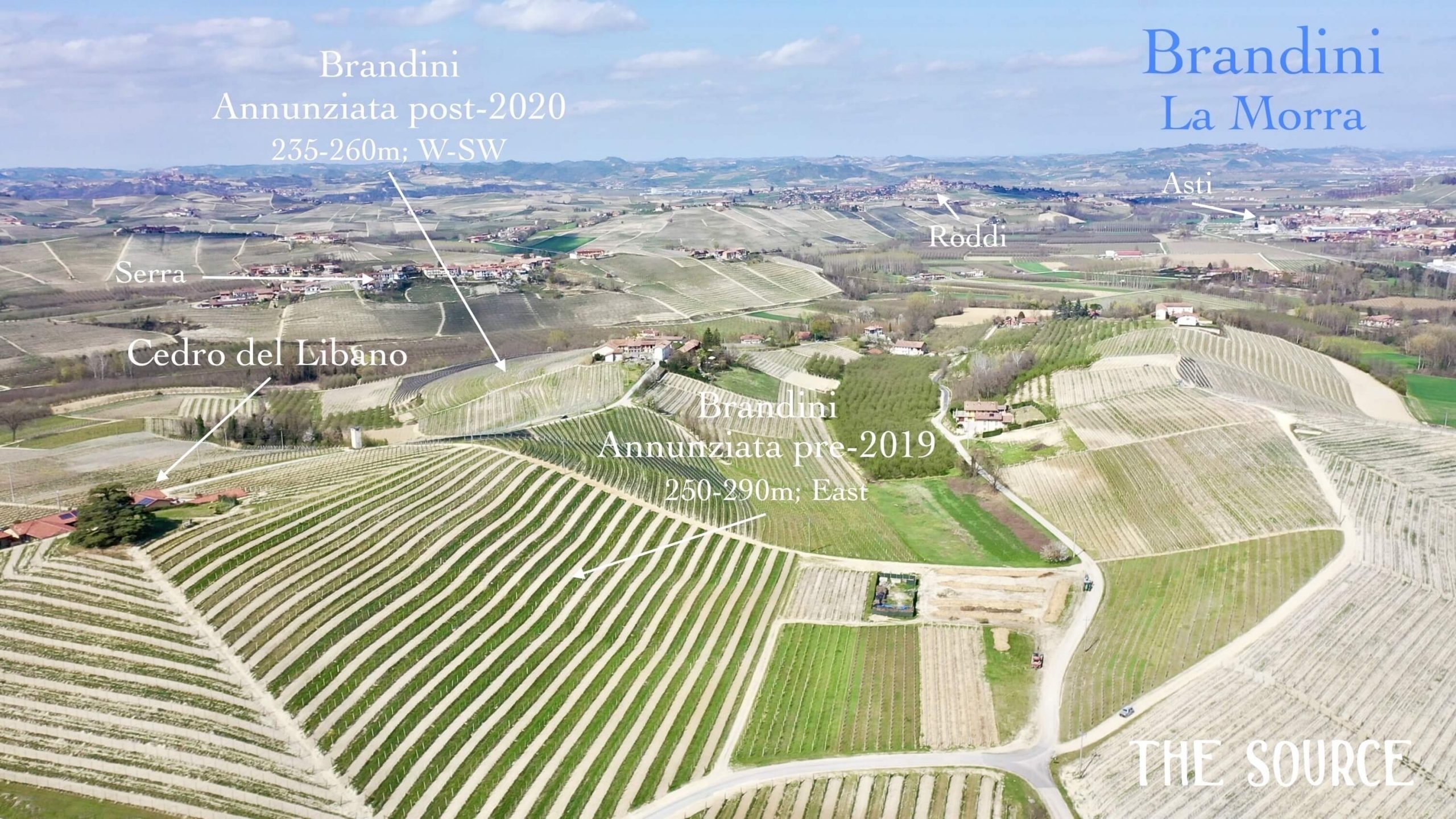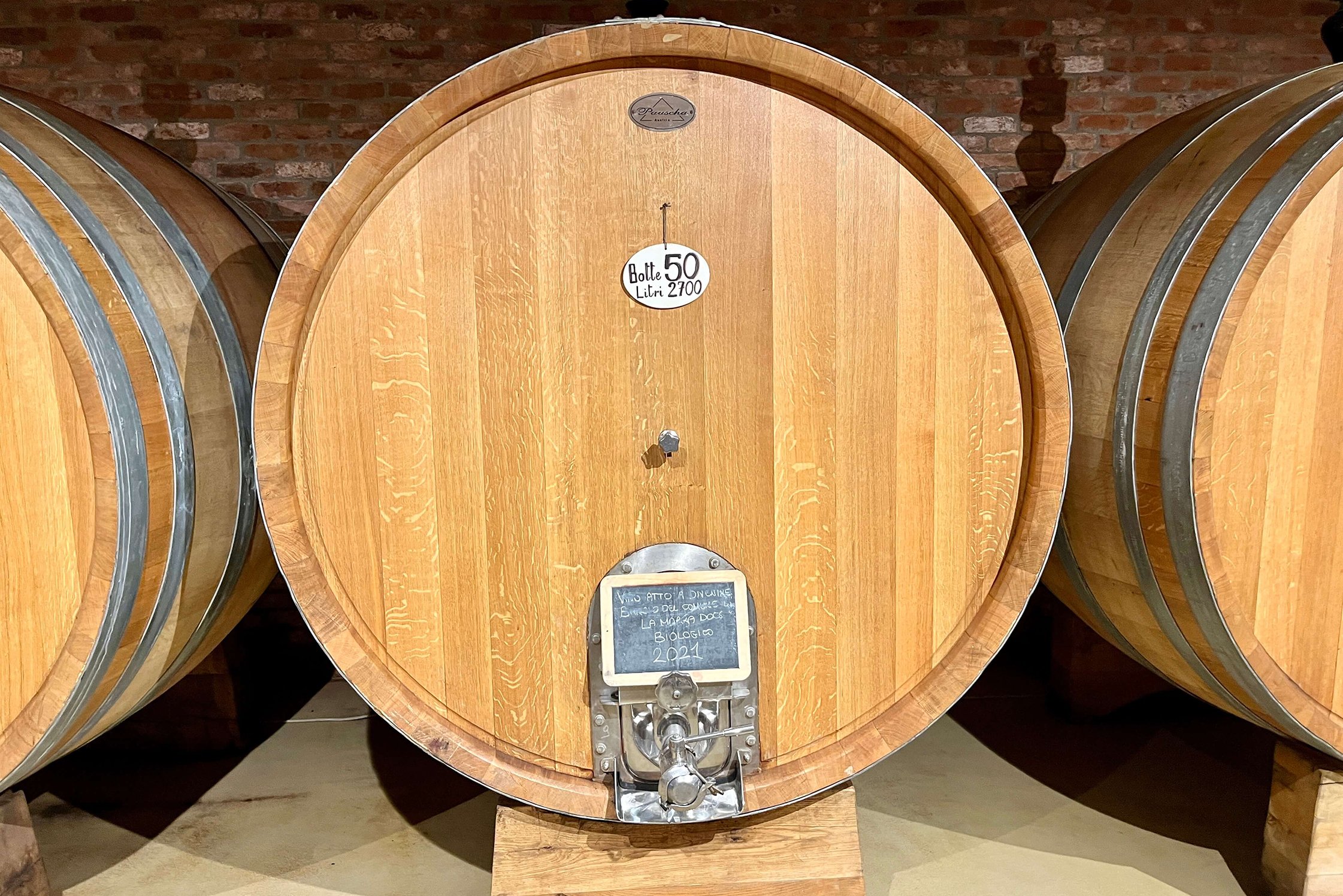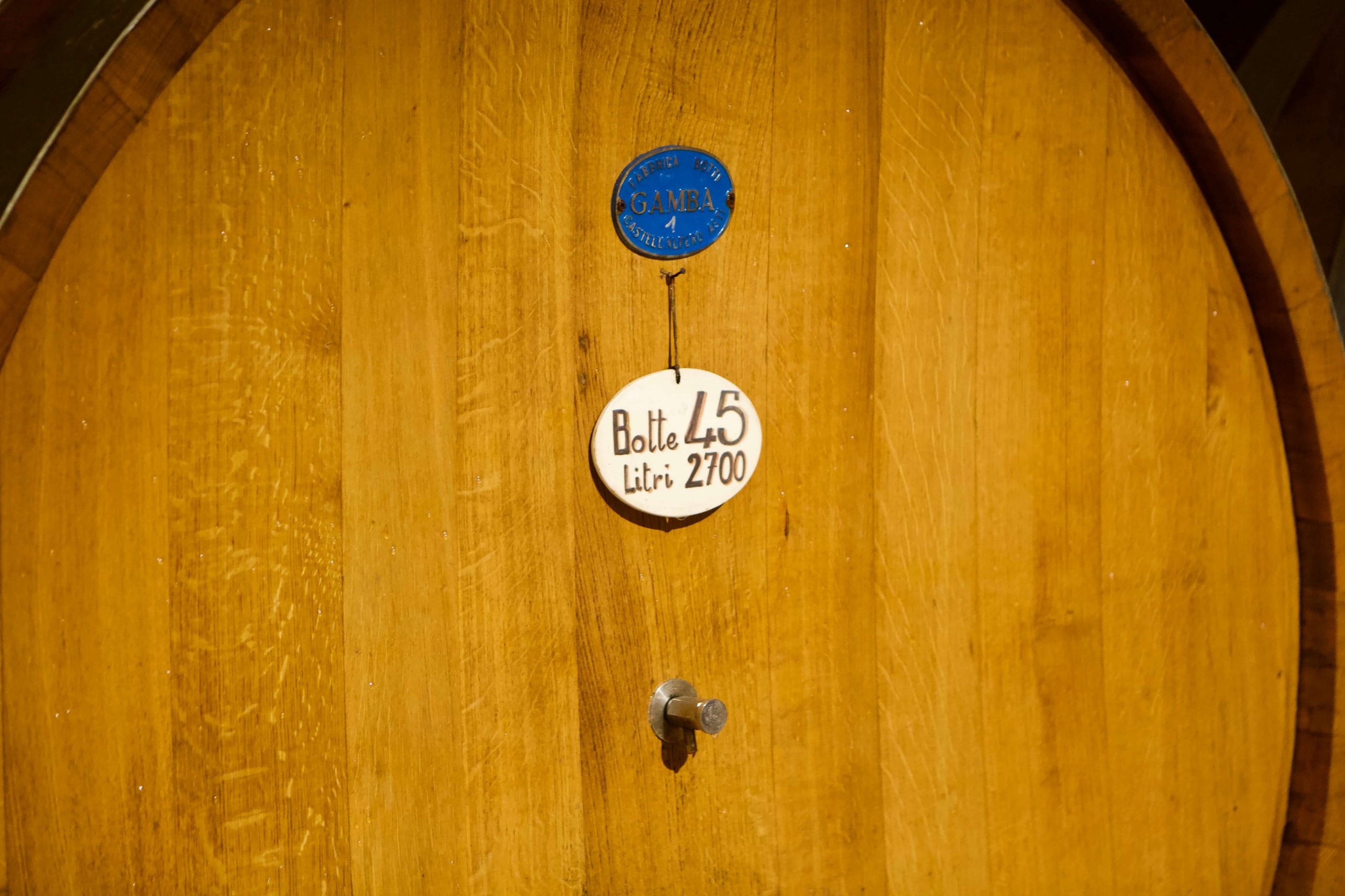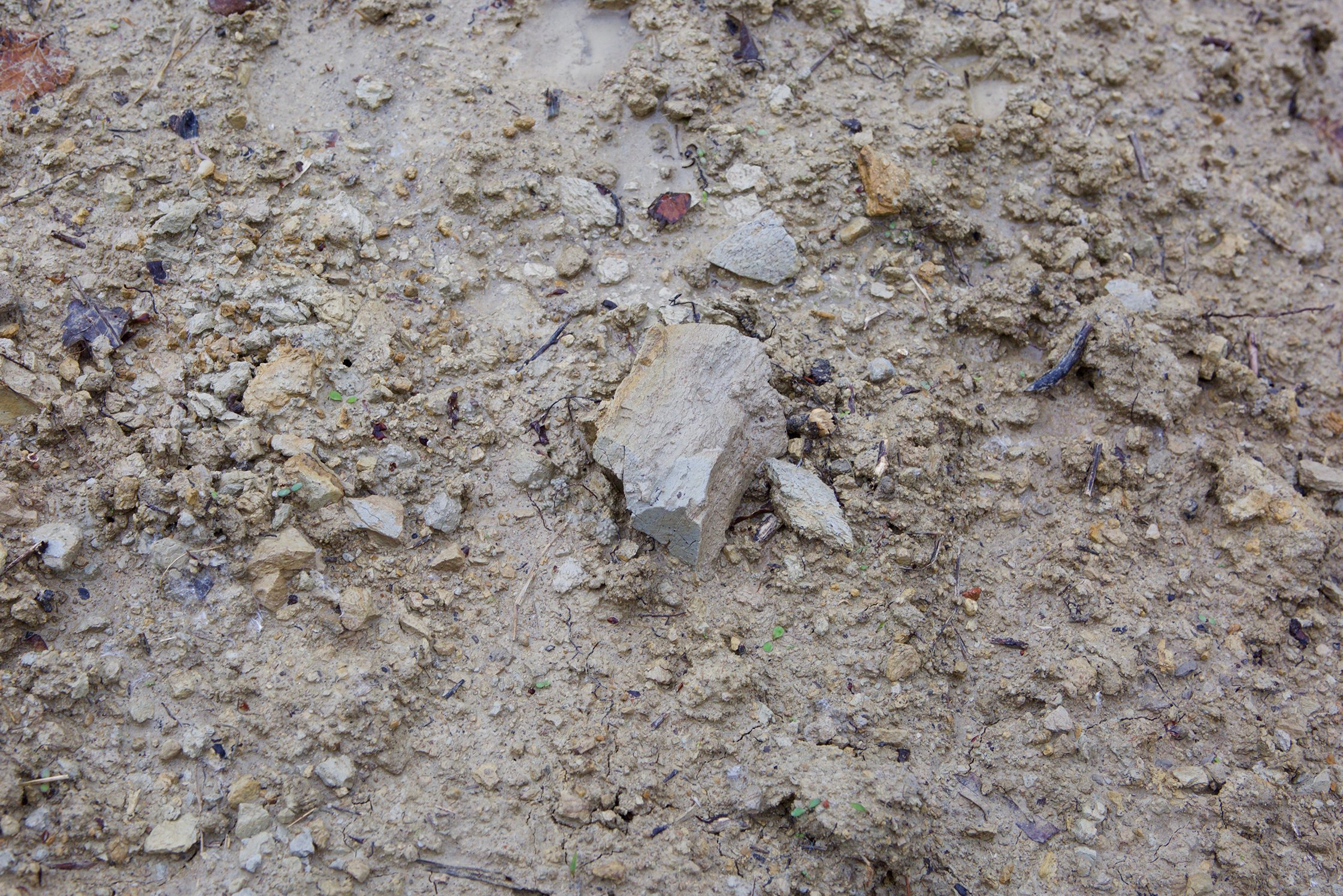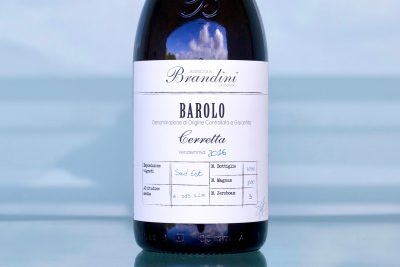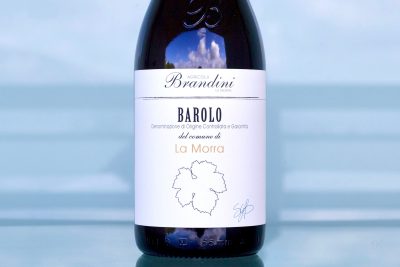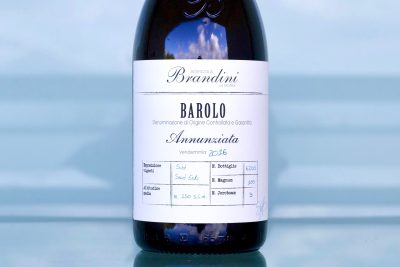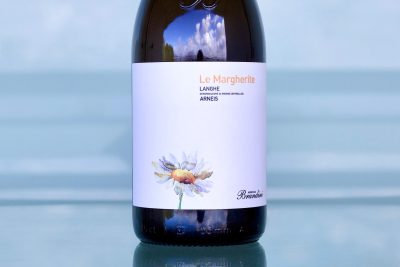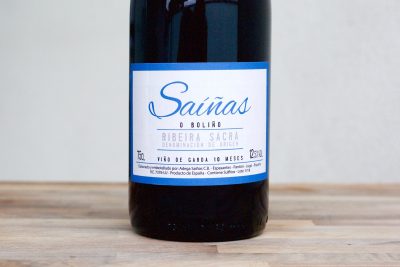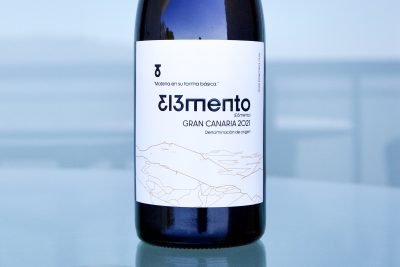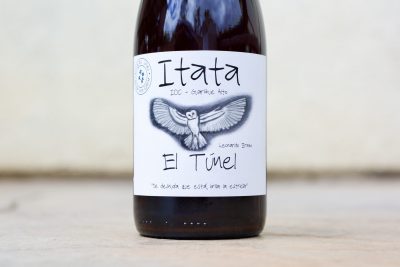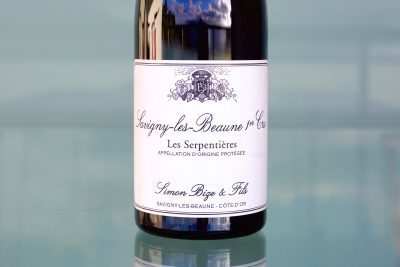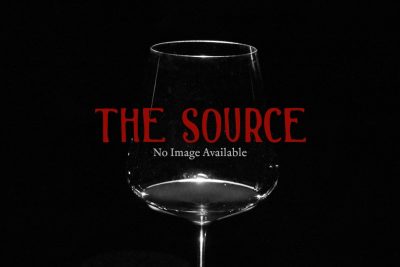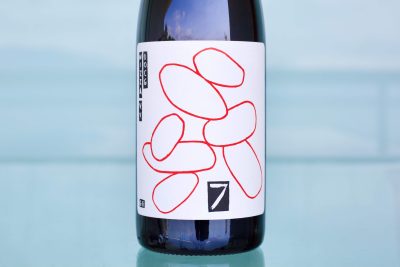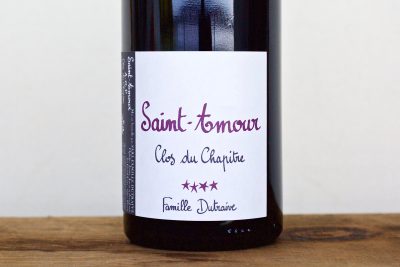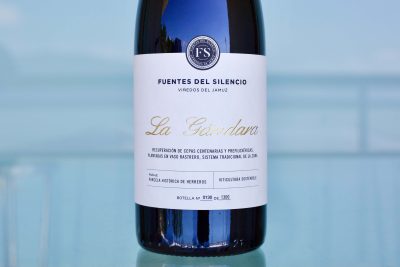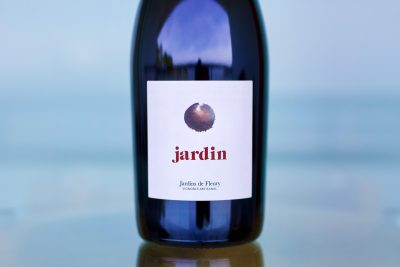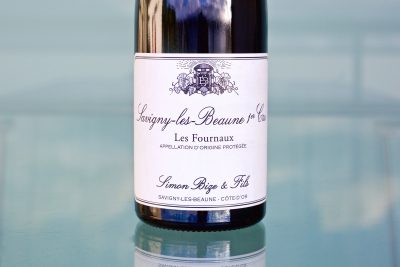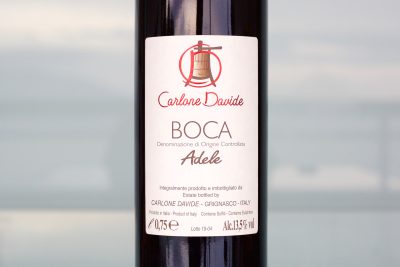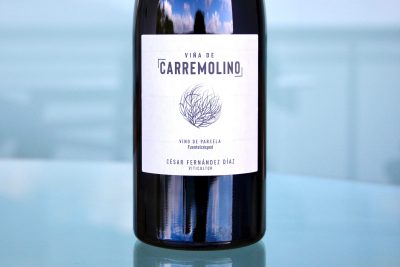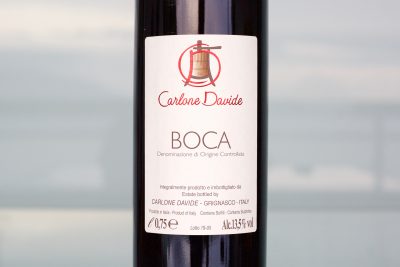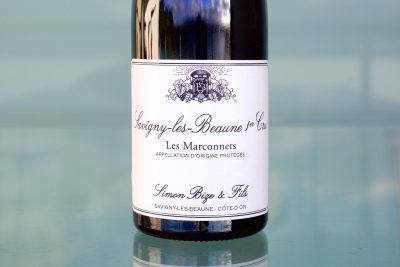Azienda Agricola Brandini
Photography and writing by Ted Vance.
During our first visit, in 2018, to Agricola Brandini, an organic cantina run by two young and idealistic sisters in full directional control with the support of their father, we instantly understood in what direction Piero Bagnasco’s daughters wanted to go. A tasting of the range two years later, with the bottled 2016 and 2017 Barolos and the 18s and 19s out of vat, their vision of raw-yet-refined and elegant Barolo was clearly undergoing manifestation. In the summer of 2022, with two of our top salespeople, JD Plotnik and Tyler Kavanaugh, both Nebbiolo junkies (like everyone in our company), we tasted the 2019 and 2020 wines with Giovanna Bagnasco, the youngest between the two sisters in charge of the wine direction. Little was said but many enthusiastic raised-eyebrow glances were exchanged as she pulled Barolo tastes from the elephant-sized, 60-hectoliter Slavonian oak vats. Eventually our poker faces were undone and we let the compliments fly. These newer wines were more refined than the 2014s and 2015s that we tasted back in 2018. Paler in color, more understated, yet deeper in terroir imprint and structure, they express the contagious joy of the Bagnascos.
Piero’s Gifts
A former Fontanafredda CEO (as well as having engaged in many other prosperous endeavors), the charismatic Piero Bagnasco came from the small Alta Langa village, Cortemilia. His family had multiple small shops in the town and his father, Giovanni, raised chickens before factory poultry farms that used shoe-box-sized cages forced him out of business. He also had a small grocery, while his wife, Gemma, had a flower shop. Piero grew up helping them until he met Oscar Farinetti, who eventually became his business partner in many ventures over the subsequent decades. Piero and Oscar started an electronics company called Unieuro, similar to Radioshack (for the Gen-Xers and Boomers) or Best Buy (for the rest!), which Giovanna says was revolutionary in the 70-80’s because few families had a TV or refrigerator. In the beginning of the 2000s they sold the company to focus on their lifelong passion for food and wine. Farinetti brought Fontanafredda under his ownership, marking the first Italian owners in eighty years, and Piero was by his side as the CEO.
Oscar and Piero then started the now world-famous Eataly in 2006. This new venture created opportunities to visit many different food and wine companies, and one meeting was at Brandini. Named after a tiny frazione (Italian for hamlet or neighborhood) in the La Morra commune, the previous family sold their grapes and wine to negociants. Piero fell in love with the property even though everyone warned him that it was too high in altitude and faced the Alps, which implied that it was too cold for good Nebbiolo production. In December 2007, he bought it anyway, and finally began the realization of a childhood dream.
A lifelong interest in organic and biodynamic practices led Piero to immediately apply these principles and attain organic certification in 2011. That same year Serena (pictured below on the left) started in the cellar and vineyards at eighteen while at Slow Foods and studying agriculture, food and wine at the University of Gastronomic Sciences in Bra. Giovanna (on the right of the picture) also joined the family work force in 2013 at eighteen as she was attending the University of Torino, where she focused on English, Spanish and French Literature and developed fluency in each.
Organic culture was not common in Barolo in 2008, which made Piero a little controversial. The sisters regularly express their gratitude for his decision and think of it as a gift that set their direction in their youth for an even higher level in the vineyard and skill in the cellar, once they were given the reins in 2018.
Brandini is on its own path, uninhibited yet respectful of past traditions. The cultural mix between le due sorelle and their youthful, dynamic father with a tremendous capacity for ingenuity and progress, and an unwavering belief, trust, and love for his daughters makes for a potent triumvirate.
A Call to Action
Few Barolo producers exemplify the urgent adaptation to climate change more than Agricola Brandini. The Bagnasco sisters, Giovanna (vintage 1994) and Serena (1992), have done their research and often talk openly about climate change and how they try not only to offset their impact but to contribute to turning it around while maintaining their business.
The necessity for climate adaptation with European viticulture is most apparent in its continental climate landscape. Many historically successful fine wine regions—Burgundy, Rhône and the Loire Valley, central Spain, north and central Italy—are suffering the worst from broiling summer temperatures following dry winters and springs. It’s especially noticeable within mostly monocultural and monovarietal wine zones like Barolo and Barbaresco.
Change of agriculture and cellar work is imperative in these historical regions and the Bagnascos are moving with the times. With today’s open-minded market keen to discover new shades within the same terroirs—especially favorable to those practicing nature-friendly viticulture—the timing is perfect for their interpretations. Most seasons now have less and less in common with those of decades ago, and more change is obviously on its way.
While some of the old guard fear relinquishing control to their kids of what they’ve spent their life building as they’ve held the line on their traditional ways (with Piemonte’s notably impoverished recent past close enough to remember for many), others like Piero support their children’s perspectives and interests for the near to long-term future by allowing them to adapt to what needs to be done, now instead of later. Giovanna says that her dad jokes that he got involved in the winemaking business late in life and doesn’t have 20 years to wait for every vintage to be ready-to-drink, so they’d better make wines that are approachable when they’re younger!
Vineyard Practices
Brandini has twenty-five hectares of estate-owned vineyards and they rent an additional ten. Their estate Barolo vineyards are located at high altitudes in the northwestern end of the region and the backside of La Morra. Many parcels for their Langhe Nebbiolo come from La Morra but also span the length of the appellation from the far north of Barolo, right between Alba and the Ceretto winery, to just south of Monforte d’Alba, making for a fabulously diverse starter Nebbiolo with a massive range of complexities led by delicious red fruits. Dolcetto and Barbera are also from the south of Monforte d’Alba and additional parcels are close to the cantina. Their five hectares of Arneis are in Roero, and all of the vineyards for their Alta Langa Brut and Brut Rosé lie between Rodello and Benevello.
Alta Langa, Roero Arneis, Dolcetto d’Alba, Barbera d’Alba, Langhe Nebbiolo, Barolo La Morra, and Barolo R56 are all certified organic. The Annunziata and Cerretta Barolos are not certified, but operations are overseen by the Bagnascos, who always encourage the growers to follow organic farming principles and treatments, and some of them are experimenting with conversion to organic farming on their own.
Tillage is kept to a minimum but they prefer not to do it at all. The carbon footprint of plowing is heavy and the roots can suffer too much from breakage if extreme care is not taken. Exceptions may be made to make the soil more sponge-like instead of compressed for when rain might come in drought years.
Giovanna explained that once she and Serena took over, they focused even more on farming at the highest level, introducing some ideas from biodynamics and permaculture. “We tried to go way above the certification requirements and elevate every aspect of farming while being careful about climate change.”
Brandini Style
From their high-altitude Alta Langa bubbles to Dolcetto, their estate Langhe Nebbiolo and Barolos from La Morra and outlying crus in Serralunga d’Alba, Cerretta and Meriame, Giovanna and Serena seek to capture the freshness and joy of youthful and serious Nebbiolo, without the pain.
Adaptation is imperative and across the region some of the most important producers are taking baby steps, while others attempt to advance at or ahead of the rate of climate change. The newer generations, like Giovanna and Serena, are often focused on elegance over power with a softer touch in the cellar—benchmarks set by all our winegrowing partners at The Source, since the beginning.
Out of necessity for phenolic balance, the farming and picking decisions at Brandini are less about Nebbiolo’s seed ripeness (though always a priority consideration and traditionally the lead indicator) and more on aroma and freshness of the fruit flavors. Giovanna explained that they are working hard to find “a sort of recipe” for the Nebbiolo of the future to work around greenness of seeds and coarse tannins. Their approach is simply to remain open to adapt to each season and each plot’s needs. Despite their partial break from the traditional winemaking of the last seventy years, terroir is always present with their minds-on, hands-off approach—as it always does with great terroirs.
Our first interaction with Brandini’s wines were the classically styled and elegant 2014 and 2015 vintages. The 2016s took a notable turn with the influence of Serena and Giovanna in the vineyards and cellar full time starting in 2015. Cellar techniques on their Barolos, like spontaneous fermentations, infusion and submerged cap, balancing with stems or no stems, gentle or vigorous extractions at specific times during fermentation, shorter or longer maceration times, softer pressing, and years of aging in large botte, with fewer rackings in between. One constant is the belief that sulfur should be delayed as long as possible, sometimes all the way up to bottling (unless the wines are in peril) to work around Nebbiolo’s potentially stern and drying tannins.
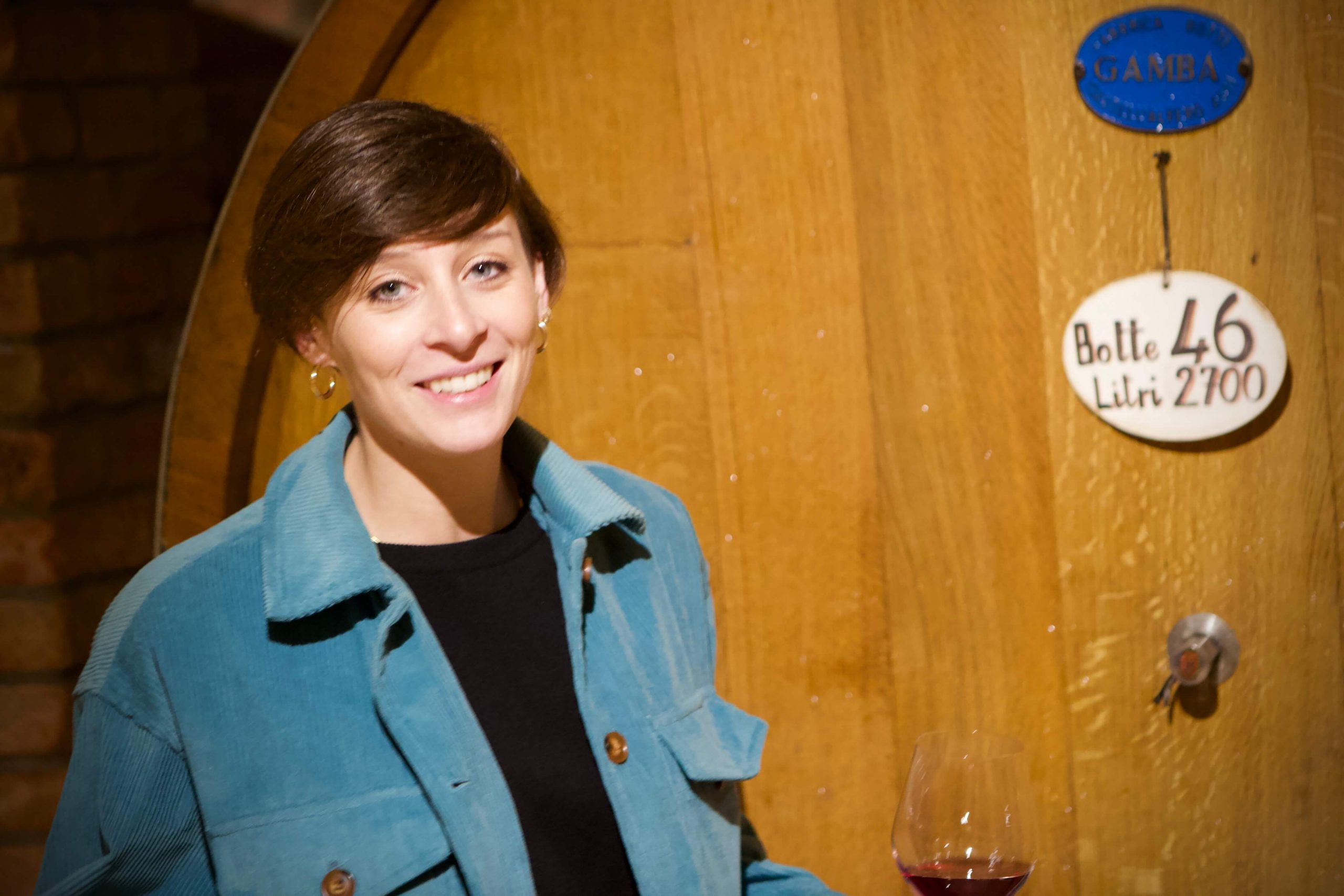
Even if the Bagnascos speak about trying to find a “sort of recipe” for the future in the face of climate change, there is no recipe, except the soft touch of these young women and their global perspectives and keen interest in other wine regions. The agenda of “less is more” inside a region celebrated for its muscle and stamina over all things, sets them apart.
The two years following the highly celebrated 2016, with 2017 known for bigger structure and 2018 an enigma for some but glorious for others who don’t need the pain but want the perfume, are standouts at Brandini. Giovanna and Serena’s soft-touch style paid off in 2017 by taming the structure and highlighting more attractive, finer aromatic nuances, even with the notoriously structured Serralunga d’Alba Cerretta vineyard. It also accentuated the beguiling nuances of the already highly perfumed 2018s. While it’s likely true that 2018 may not stand the test of time compared to other vintages with a stronger long-game hand, who cares when they taste so damn good when they’re young? While comparing good young wine versus ornery youths, Piero says, “non puoi trasformare una patata in un tartufo.” I.e., You can’t turn a potato into a truffle.
Jumping to 2019, they achieved yet another uptick (maybe two full clicks), showing the growth of confidence and maturity in their work in a very short time span. One of the great vintages of our lifetime, 2019 is followed by two more seasons with considerable promise, too. These vintages are reminiscent of the wonderfully high quality of the three-peat superstars in 1999, 2000 and 2001—a trilogy toward the beginning of one of the greatest winning streaks in wine history.
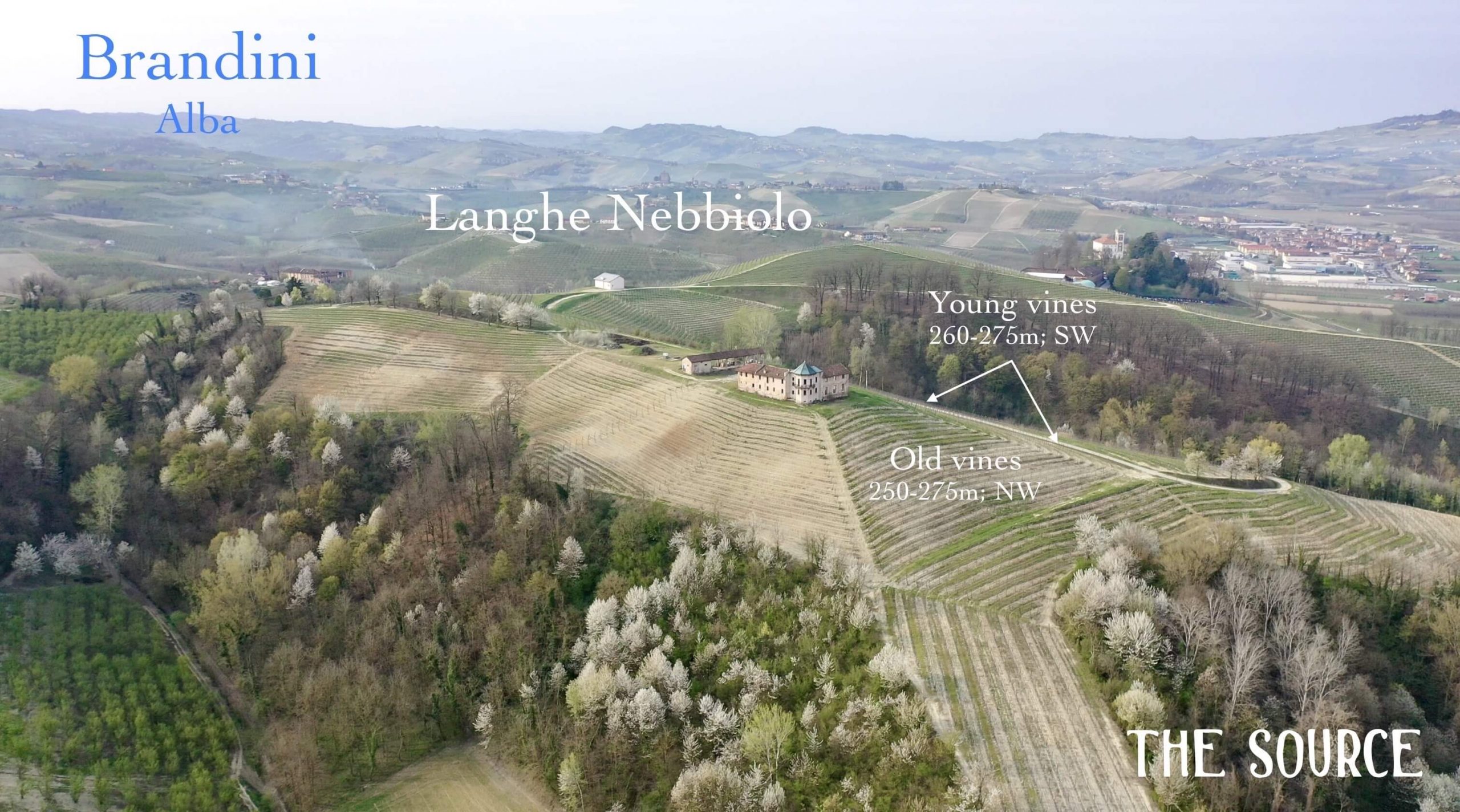
Langhe Nebbiolo
People often say the first Barolo in a producer’s range is the cantina’s business card. But for those on a modest wine budget looking for inspiration and Nebbiolo summer dreams, it might be Brandini’s mercurial Langhe Nebbiolo “Filari Corti.” Its charm meter is Pelaverga-Frapatto level, but with more sophistication. Picked earlier than Nebbiolo for their Barolos, it strikes with upfront and bright fruit and flower nuances: first-of-the-season farmer’s market strawberries and raspberries, pink and red flowers, sweet rose, poppy, meyer lemon and orange, and extremely clean lees—this last being an intoxicating tasting note for those in the know. Lively and taut, classic regional and varietal notes of sweet licorice and tar creep back up on the finish.
Despite its seductive approach, it’s also serious. Coming to understand its pedigree requires more swirling and sipping than gulping. With similar cask-aging obligations to that of a Barbaresco (nine months minimum in wood for this DOCG), it’s aged twelve months in large wooden casks. It comes from numerous organic parcels with an average age of fifteen years from Alba (between the southside of town and the Ceretto winery), Monforte d’Alba, and La Morra, giving it an altitude range between 270m to almost 500m, which brings breadth and layering that emerges once one’s palate is settled in after the infatuation period.
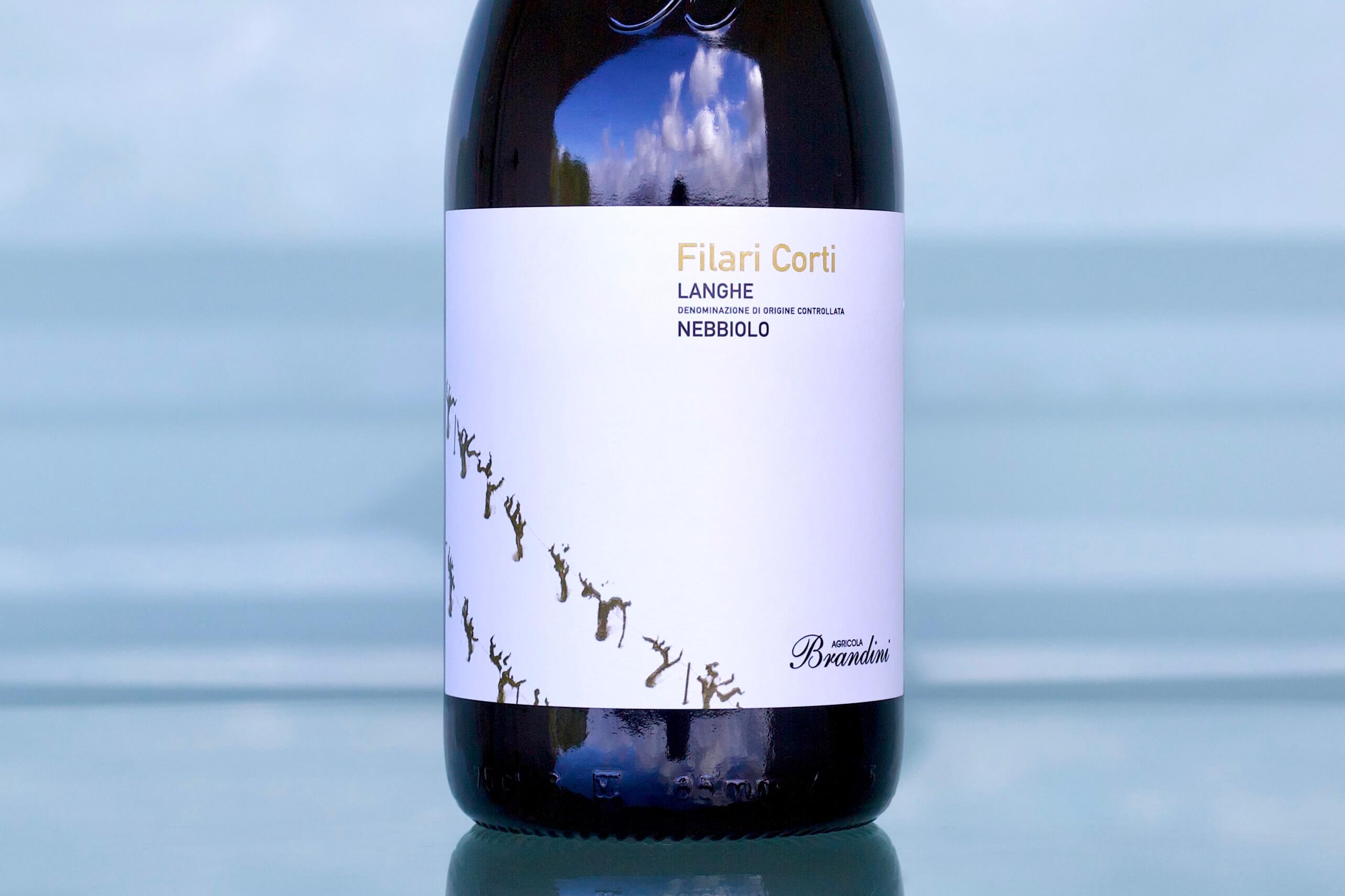
Barolo La Morra
While Filari Corti may be Brandini’s Nebbiolo pop star, the La Morra Barolo is the range’s charismatic leader—the unification of four La Morra vineyard parcels. Giovanna expresses a lot of passion for its place in the range, saying, “The La Morra Barolo is our love-declaration to the village of La Morra! It’s the expression of the elegance, finesse, aromatics, and complexity that La Morra has to offer.”
This flagship wine comes from four different areas in the upper western area of La Morra with a variety of altitudes and expositions. Every parcel has a unique terroir and are therefore fermented separately. The parcels range between 300-450m in altitude, with southeast/south/southwest exposition between Brandini’s agricola and the nearby Sant’Anna area, outside of the heart of the greater Barolo appellation. The parcels are in the fraziones Brandini, Sant’Anna, San Bartolomeo, and Marmo, and have an average age of around 25 years.
The cellar work begins with full destemming and spontaneous fermentations. Each parcel runs its own course through fermentation, then the four are blended into two tanks and spend another 10-15 days with the cap submerged to continue extracting the beautiful aromatics and complexity. The wines are then aged in 60hl Slavonian oak botte for approximately twenty-four months with a single mid-élevage racking and one in preparation for bottling. Like all their Barolos, the first sulfite addition is made after malolactic and final one before bottling.
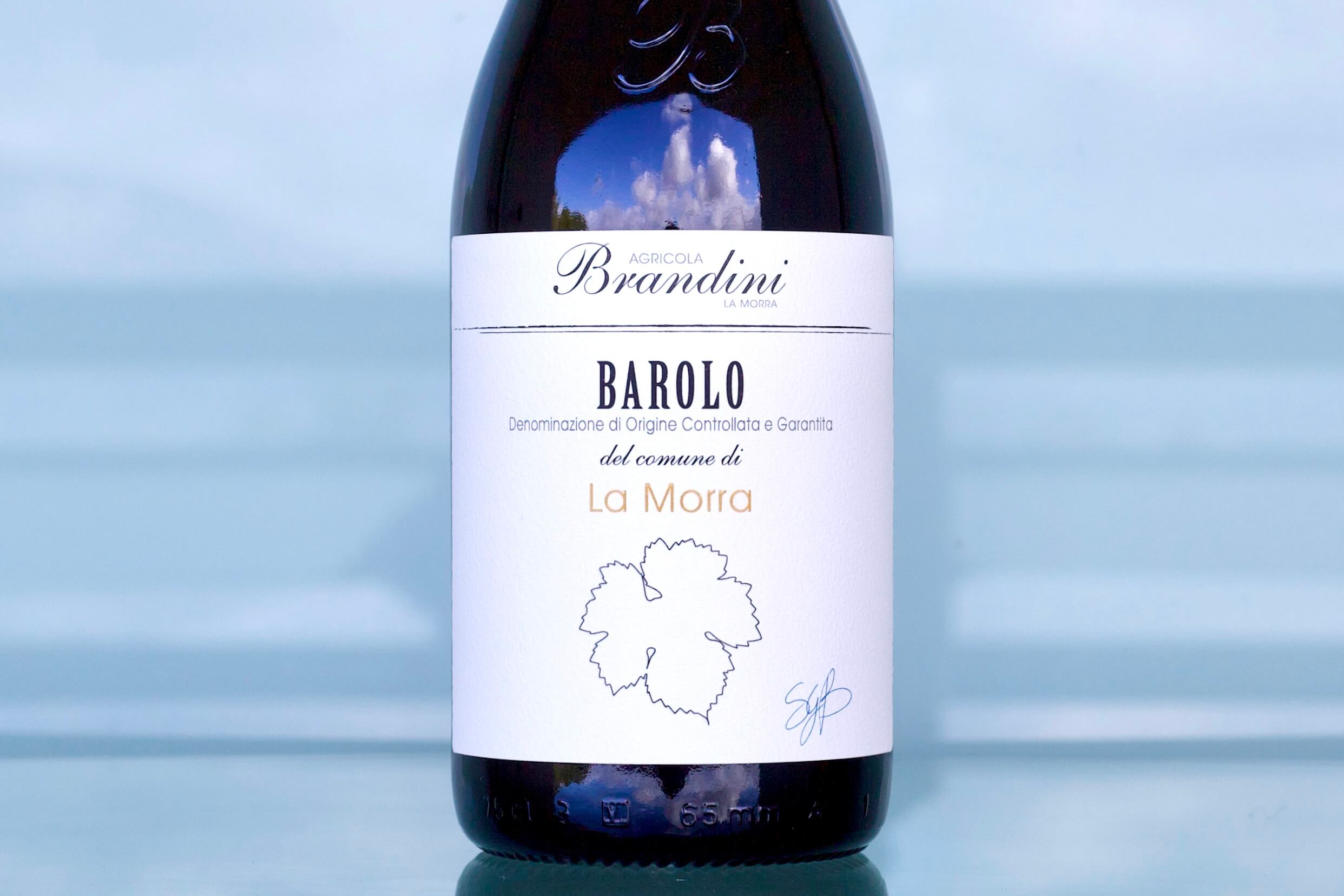
La Morra is known to be more elegant among the main Barolo communes because of its greater sand composition in addition to some of the higher altitude sites. It’s on the Marne di Sant’Agata and Cassano Spinola formations, which are the region’s most recent geological formations (five millions years ago) and are characterized by calcareous sandstones known to deliver more fruit and flower aromatics and in general a more elegant structure. This tendency of sandy soils along with some of the highest sites in the Barolo commune and Brandini’s work to accentuate finesse above all makes for a unique Barolo that drinks very well young and will also age nicely, building on its youthful assets. Its fruit and flower spectrum depends greatly on the vintage and tends toward the orange and soft red fruits with some citrus notes and subtle red rose, black currant, and sweet rhubarb. Classic in Barolo expression, it leads with aromatic generosity and an enticing savory and woodsy character.
Barolo R56
Brandini’s rarest wine is also its beacon. R56, formerly known as Resa 56 (a name change forced by the Italian government), is the family’s brightest and purest light—their north star; the wine that sets the tone for all others.
Located outside the vast views of Barolo that connect its famous castles of Serralunga, Castiglione, Monforte and Barolo, and the fantasyland hilltop villages in view, separated by deeply carved, vine covered valleys, R56 humbly sits atop a less treacherous landscape. Perched high on a more gentle ridge with views of the less sexy industrial towns of Bra and Cherasco to the northwest and west in the Po Valley below, they are blessed with a breathtaking, better-than-IMAX view of the magnificently exposed Alps to the north and west—a fair tradeoff. R56’s vines surround the physical and spiritual headquarters of the Bagnascos and their inviting Agricola Brandini equipped with a gorgeous restaurant (featuring a fabulous Piemontese-focused list that includes more than Barolo, Barbaresco and Langhe wines) renovated in 2023, their atmosphere is warm and energetic and they have a small collection of cozy rooms.
Only a straight shot of two and a half kilometers from neighboring Verduno’s town center to the north and five kilometers from its most celebrated cru, Monvigliero, it’s right to think that R56 has aromatic genetics from this neighbor known for bottling joyful and playful Barolos. Beyond its balance of elegance and power, perhaps some differences are R56’s fine lines and upright nature. Because it’s fully exposed to the southwest and the uninhibited path of the cooling Alpine winds at altitudes of 410-435 meters (which makes it one of the highest altitude crus in Barolo), it tends to have more tension, even if it’s exuberant when young.
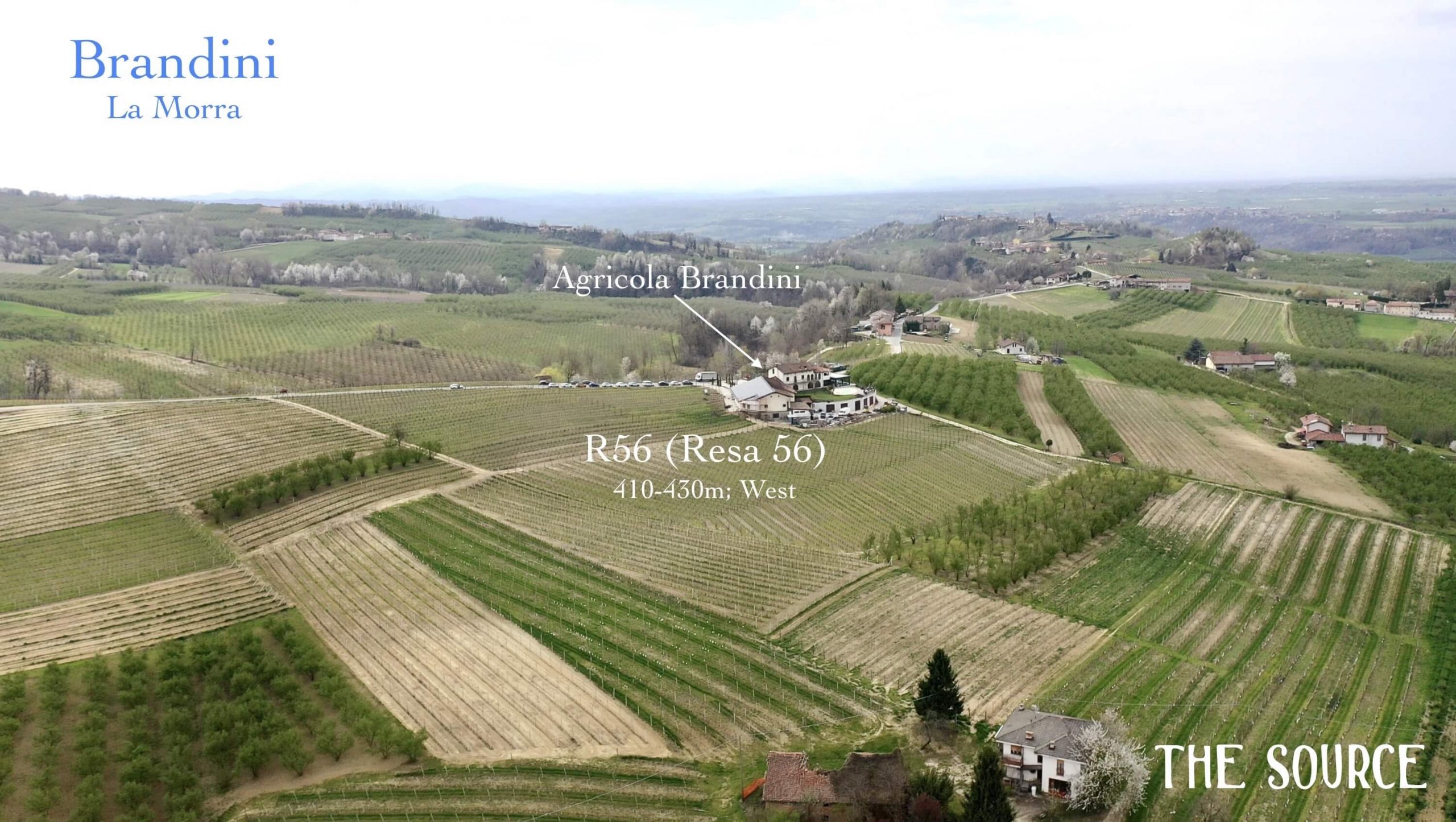
The grapes are separated into two vats, one fully destemmed and the other entirely whole bunch. After their unaided fermentation is complete within a week or so, they are pressed, blended, and then put to Slavonian oak botte for 18-20 months before bottling.
While it has the same geology of the parcels that go into the La Morra Barolo, Giovanna says that the uniqueness of this site is the altitude and the slightly closer proximity to the Alps, which add a more introverted and complex aspect to the elegance of La Morra. However, the versions of R56 under the direction of Giovanna and Serena (since 2018) are enchanting and embody all the tasting theory one would expect from the site and the hands-off, partially carbonic fermentation method: high tones, fine lines, tense and bright red fruit, exotic purple fruits and flowers, and a structure built more on acidity than its soft chalky tannins. Tasting notes on the 2018 veer into the overindulgent because of its assertive aromatics and the typical aromas of the younger versions are, as mentioned, reminiscent of soft-handed Verduno Nebbiolo as well as Pelaverga, but a little tighter, along with the most honorable nuances of Frappato, and other Italianesque dried orange liqueurs and amaros. It’s succulent and intoxicating with surprising depth, likely from its having a stronger clay element than sand, in contrast to many of La Morra’s sandier sites.
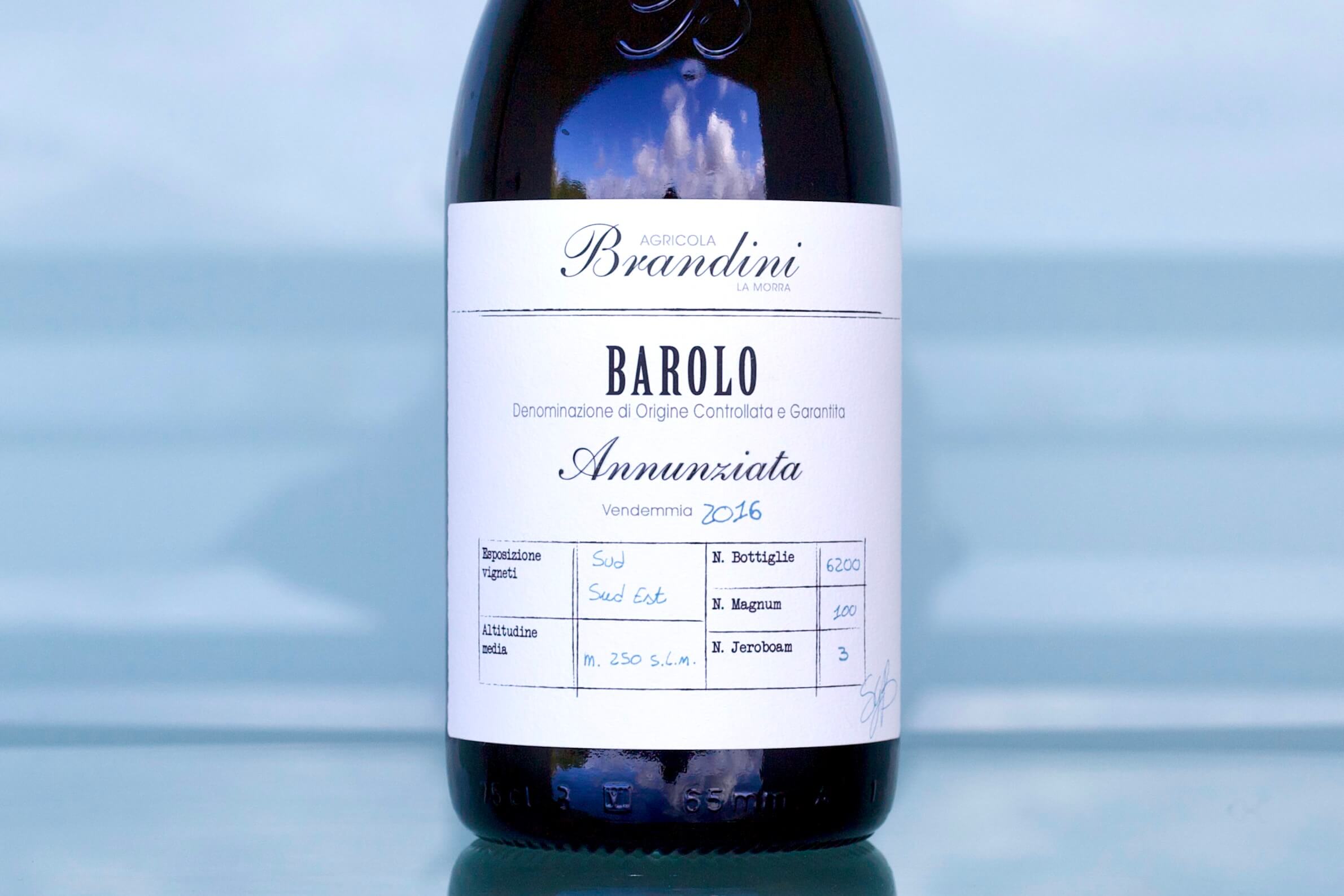
Barolo Annunziata
Giovanna and Serena’s stylistic objective with the celebrated Annuziata vineyard is to “represent a perfect picture of La Morra with its pure elegance, fruit, flowers and soft tannins.” Accomplished!
The 2019 and 2020 crop was lost to hail. How terrible to lose in such amazing years! The sources also changed: prior to 2021, the Annuziata came from a parcel just below the famous Lebanese cedar tree, facing east and slightly southeast. 2021 and beyond, the parcel is in the opposite direction facing west and tilted slightly toward the south. Giovanna explained that the newer parcel may be more optimally positioned to reduce the probability of hail damage, and the wines are a touch fresher—perhaps as much to do with Brandini’s continued stylistic evolution toward a tighter and more aromatic style. In any case, we’ll miss this wine in the two back-to-back fabulous vintages that were lost. (The early tastings of the 2020s are extremely promising, though sandwiched between 2019 and 2021, they will likely be overlooked, like 2012, a super year that continues to prove its merit.)
The geological formation here is also generally the same as R56 and the La Morra Barolo (see the La Morra Barolo for details). Giovanna explains the location of this site is unique as well since it’s at a lower altitude and gets a lot of sunshine that ripens the fruit first and always allows for great approachability even when young, characterized by expressive aromatics and soft tannins. These grapes are grown on a south/southwest exposition at 250m average altitude and crafted in a classical Barolo way with destemmed fruit and a fermentation that lasts around three weeks. From there it then goes into large Slavonian oak vats for 18-20 months without any racking until bottling.
The Source’s face of San Francisco, Danny DeMartini, a regular drinker of this wine (he’s as completely mad for Nebbiolo as I am), says that “The first thing worth noting is Annuziata’s obvious upfront appeal. Pulling the cork, it’s immediately impressive, with a sleek, cool fruit aroma accented by florals and spices. The wines of Annunziata are usually open, but Brandini’s is not blousy even if it offers a wide spectrum of flavors. It’s usually immediately delicious and mouth coating with wonderful fruit flavors, and continues to release more nuance and complexity. Undertones of eucalyptus and a whiff of spice also appear as the wine deepens, and the mouthfeel is velvety smooth without much drying tannin. It’s concentrated but lifted aromatically, and incredibly balanced and precise. Brandini’s version gives credence to the notion that this site is more elegant than La Morra’s famed Brunate and Cerequio.”
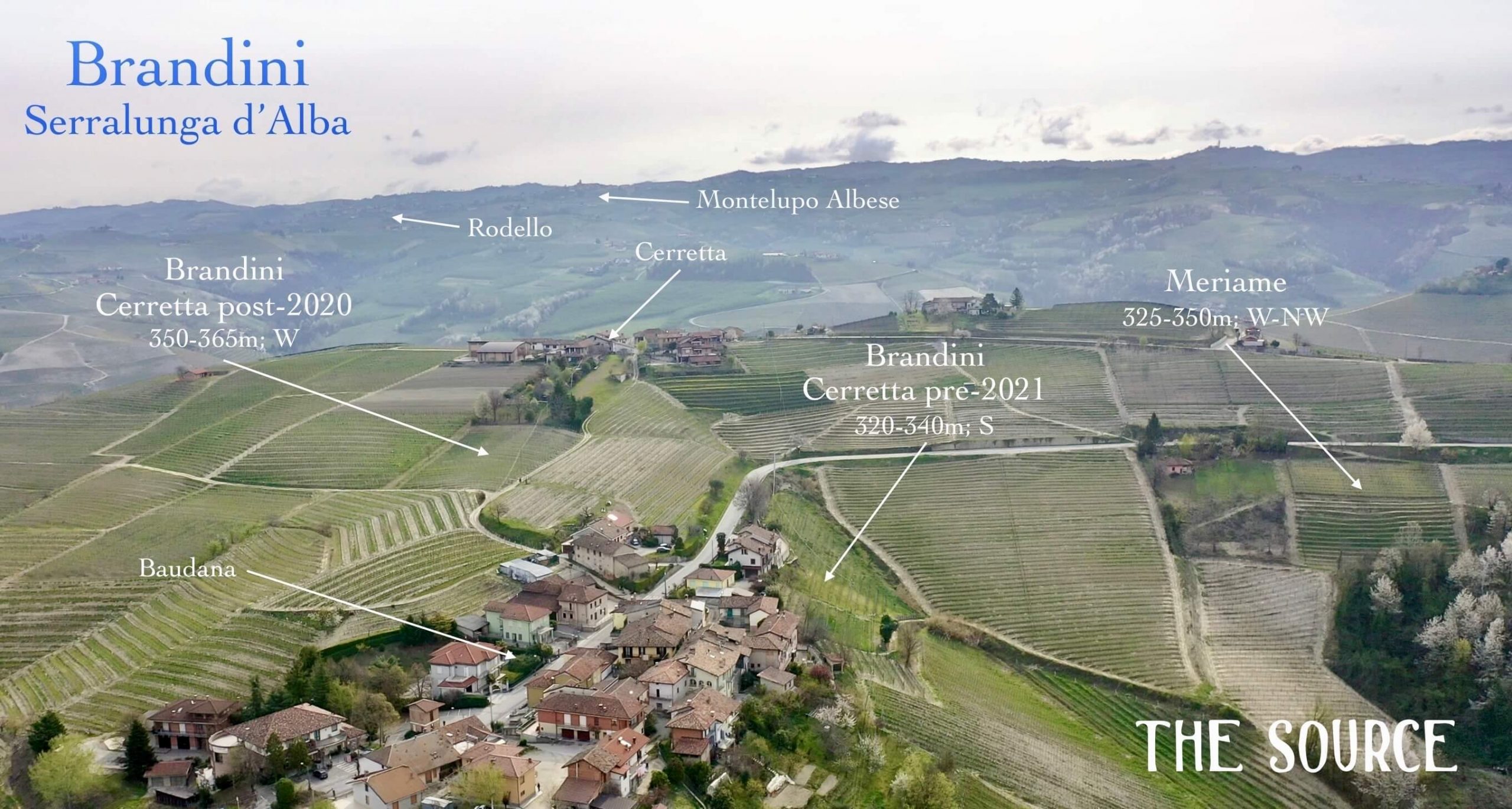
Barolo Cerretta
Cerretta’s relevance among the great Barolo crus was greatly influenced by the 2008 purchase of a parcel by Roberto Conterno. Now Cerretta is one of the most talked about crus in the region known for its stature and power. Brandini’s rented parcel until 2021 faces directly south on a steep hill, while the parcel rented from 2021 and on faces toward the west and slightly north. Both sites produce wines that represent Serralunga terroir with classic spicier, hearty notes, and stronger tannins and structure, but with the Bagnasco soft touch it exhibits elegance rarely seen from this cru when young.
Because of the tendency toward firmness and structure, the Cerretta harvest is partially made with destemmed grapes and in another vat, whole bunches. After finishing around three weeks of fermentation, the wine is vatted and the skins pressed. The wines are then blended together and aged for 18-20 months in large Slavonian oak vats without racking until bottling.
A classy and well-mannered brut, kindred to the minerally and structured north side of Burgundy’s Volnay or the north end of Nuits-Saint-Georges with more iron fist than velvet glove, Cerretta may be best served after some time open—an hour with micro-dose tastes along the way would pay dividends; though with these refined aromatics similar in subtlety to a great Burgundy, decanting will discard some of the highest aromatic highlights. Usually more savory than sweet, Brandini’s interpretation in its youth reveals hints of strawberry, cherry, and sweet rhubarb with stronger notes of red licorice, anise and classic Nebbiolo sweet tar. It’s always more rustic than aristocratic compared to the others in Brandini’s Barolo range and even slightly more orange in hue and modestly floral—veering toward orange flower and dried rose—it surprises with immediate appeal in its youth without any indication that it won’t stand the test of time, which is to be expected from this formidable cru.
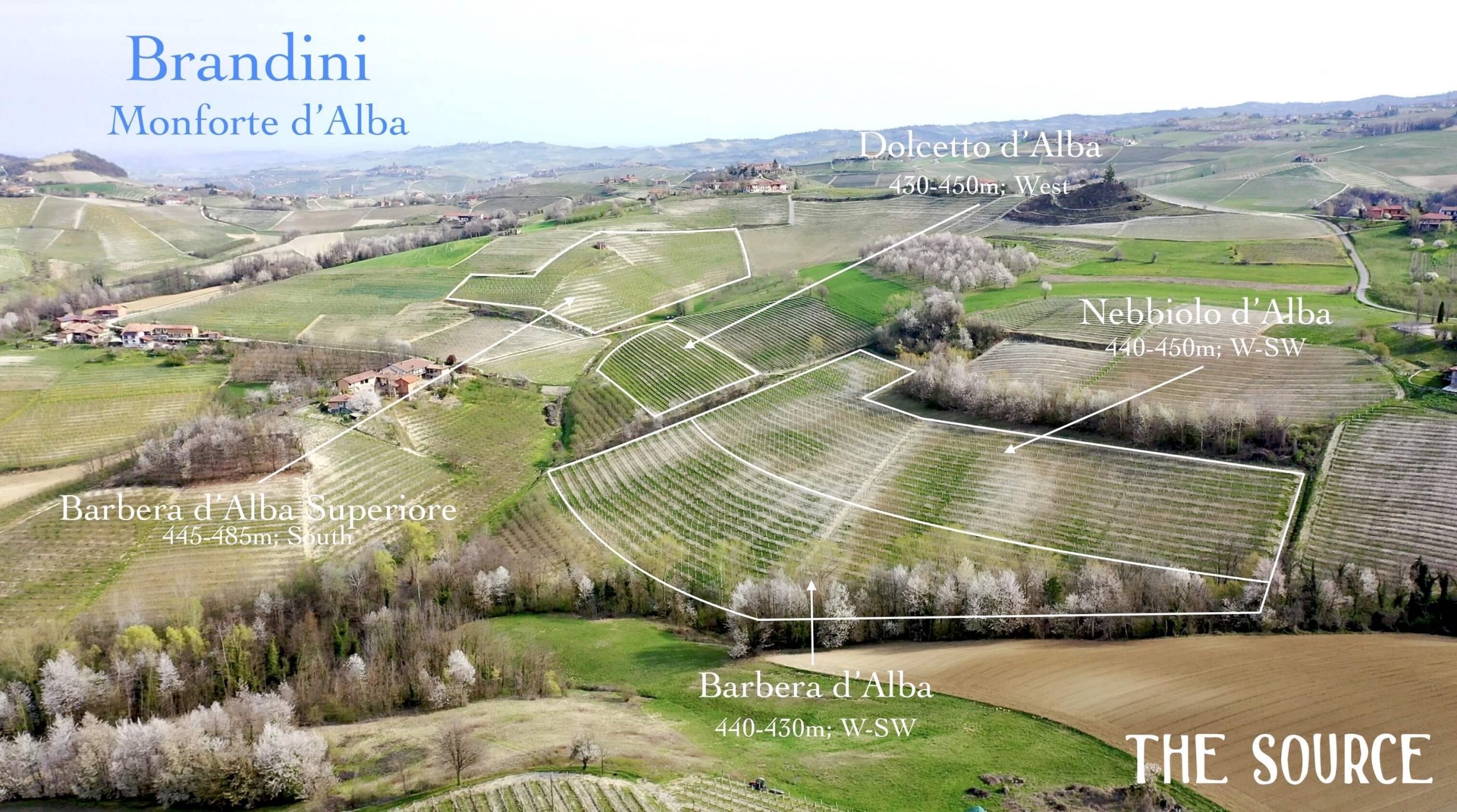
Dolcetto d’Alba “Filari Lunghi”
Fans of this underrated and globally underappreciated variety (though the most consumed wine by Langhe winegrowing families), the Bagnascos make a playful and delicate rendition by picking early “to preserve all the beautiful fruity and flowery aromatics,” and to ensure healthy fruit from this delicate cluster more susceptible to mildew than Barbera and Nebbiolo. It’s still serious wine but made with the intention of joyful drinking shortly after bottling, though it will age well in the short term.
Since 2021, Brandini’s Dolcetto “Filari Lunghi” comes from a single high altitude, organic vineyard with around fifteen years of age, located southeast of Monforte d’Alba on a steep, west-facing slope composed of clay, limestone, and sand. (The previous Dolcettos are partially from here and also from Dogliani.) Typically first out of the glass are the bright red rose petals and flowers—hallmarks of delicious, high altitude (440-450m) Dolcetto. The variety has a lot of fruit (more red here than the typical Dolcetto) and has good tannin but soft acidity and pairs perfectly with simply prepared Piemontese food, like the dishes of the past that came before the more elaborate cuisine often found today. The alcohol content ranges between 12.5-13.5%, and the aromatic development of each season is the driving force for picking decisions with Dolcetto and all Brandini’s wines.
Barbera d’Alba Wines
“Barbera is difficult to grow with today’s climate conditions but if picked at the right moment it can deliver a very balanced wine with beautiful aromatics, a full body, and mouthwatering acidity, perfect with food,” Giovanna says.
All of the Barbera d’Alba comes from a single amphitheater in Monforte d’Alba, about two kilometers directly southeast from the village center. It’s also where they grow all of their Dolcetto (since 2021) and a large portion of the Langhe Nebbiolo. These altitudes between 400-485m give Barbera its necessary seasonal length for the slower development of phenolics needed for the softening of this extremely high-acid variety.
Fermented and aged in steel, Brandini’s Barbera d’Alba is taken from young vines (~10 years old) grown at lower altitude (400-430m) than the plot for the Superiore fruit, facing directly west on limestone, clay and sand. Led with a bright beautiful bouquet and soft structure, this is the fresher and more immediate of the two.
“Our idea is to pick the Barbera d’Alba Superiore Rocche del Santo on the earlier side to preserve all the freshness of the fruit and then age in big barrels to balance the acidity and potential harshness of the structure.” It’s aged for a year in wood after two weeks of fermentation (fully destemmed, as is the first Barbera), and shows more depth and complex layering as time passes. The Rocche del Santo is located at 445-485m on steep, directly south facing, clay, limestone and sand vineyard with an average age of twenty-five years.
Langhe Arneis “Le Margherite”
“Our Arneis wants to show the freshness and crispiness of this variety,” Giovanna says. “It has unique herbaceous aromatics (sage, thyme, rosemary) with white flowers (orange blossoms) and is pure, fresh, and vertical with good acidity and a long finish.”
Giovanna explained that Arneis went through some troubled times a few decades ago and got a bad rap. When bubbles in white wine became interesting, many growers in the Langhe planted Arneis in unfavorable locations: bottom of hills, north faces—essentially where other grapes wouldn’t ripen either. Whatever made it past the frost season had to contend with mildew feasting on the vine’s chlorophyll and then tainting the tight, fat-berried Arneis clusters. The grapes were picked when green or yellow, perfect for zippy, minerally white wine, no? Not with Arneis. It reaches its highest level when golden, otherwise it remains neutral, boring and austere.
These days, respect has returned to this grape and it’s time for it to reach its potential. Changes in approach, like keeping the vines above 250m to stave off frost, and better expositions with fewer facing directly north but rather more toward southerly exposures, or due east or west, or slightly tilted toward the north, like Brandini’s parcel in Canale facing northeast that’s fully exposed to the sun at an altitude of 350m. Here, the wind contact with the grapes, the early morning sun and good canopy management keeps mildew at bay while the Bagnascos wait patiently for the grapes to go golden—a difficult discipline for a family driven by high acid wines.
Calcareous sandy soils are also part of the Arneis matrix of high quality and expected lift for a variety that struggles in heavy soils or when overplayed in the cellar with too much hand in the wine—inert vessels, like stainless steel, serve Arneis well. At Brandini, the golden Arneis berries are whole cluster pressed and naturally ferment between 12-18C (lower temps at the beginning and end, with the highest in the middle of the one-week fermentation); the lowering of temperature (rather than thumping the wine with sulfites) prohibits malolactic fermentation. Stirred a few times during aging to bring a little more texture to the body and highlight the floral elements, the wine is fined and filtered prior to bottling.
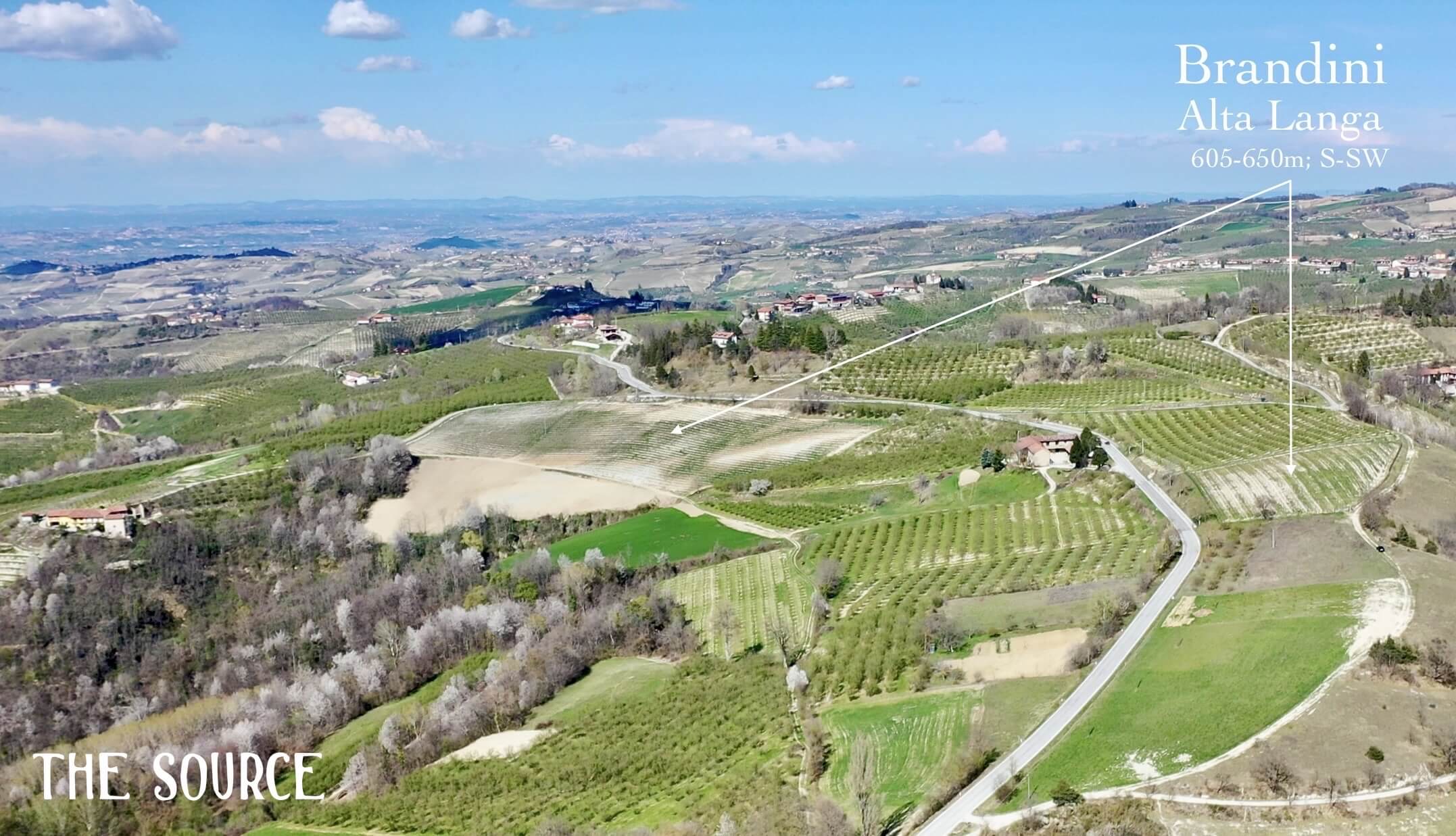
Alta Langa Brut
Finally we arrive at the wine that kicks off all meaningful occasions. Giovanna is proud of all their wines, but they have a special relationship with their metodo classico brut. Made from 85% Pinot Noir and 15% Chardonnay, it’s grown on two south to southwest facing parcels between 605-650m altitude on limestone bedrock just east of Rodello in the Alta Langa, about seven kilometers directly east of Serralunga d’Alba. The processing is straightforward with whole-bunch pressed grapes, fermentation in steel with a maximum temperature of 17°C, bottled and crown capped for thirty-six months (48 months for the metodo classico rosé) prior to disgorgement.
Alta Langa is a unique and tightly run new DOCG. The minimum altitude is 250m (whereas many others are well above 600m, like Brandini’s), but this low altitude is rarely used, given that the appellation regulators privilege higher altitude sites for planting along with higher sustainable vineyard cultures like organic and biodynamics, and no new vineyards have been allowed since 2019. Smaller and younger growers are also prioritized over big companies and growers. The minimum aging on lees is thirty months to ensure the style of the appellation is consistent. There are also yield controls, minimums on acidity and alcohol, and much more. Additional information can be found at this fabulous website: https://www.altalangadocg.com/en/alta-langa-docg/what-is-alta-langa-docg/
Stylistically inspired by Champagne, a midway between oxidized and tertiary-strong style and vertical, minerally and extreme tension expression, Giovanna says that, “Our objective for the Alta Langa is to have a well-balanced wine with great acidity and freshness. We also prefer bubbles with a good body and structure to allow for a long aging potential.” Alta Langa DOCG wines must always be from a single year, so they represent the growing season and its distinctive identity. “I’m from Cortemilia,” she added, “a village where most of the hazelnuts for Ferrero are grown and prepared. In the village there are three companies who peel and roast the hazelnuts before delivery to Ferrero. During those weeks every year the whole village smells like hazelnuts, and when I take the first sips of Alta Langa, the hazelnut notes always take me back to that childhood memory.” Giovanna describes the wine as also having aromatic notes of candied orange peel, almond, dried fruit, white flowers and brioche, with good body, an acidic backbone, and fine, persistent bubbles.
Azienda Agricola Brandini - 2018 Barolo R56
Out of stock
GROWER OVERVIEW
The organically farmed Agricola Brandini is run by two young and idealistic sisters, Serena (vintage 1992) and Giovanna (1994), in full directional control with the support of their father, Piero Bagnasco. Certified organic since 2011, they have also introduced biodynamics and permaculture to their 25 estate-owned hectares in the high-altitude zones of La Morra, Roero and Alta Langha. Their estate Barolo vineyards (four La Morra parcels and R56) are located on the backside (northwest) of La Morra and are characterized by calcareous sandstones that render Barolos of great elegance. They also rent 10 hectares of vines for the crus, Cerretta and Annunziata, and organically farmed and certified, high altitude sites south of Monforte d’Alba for their Alba wines of Dolcetto, Barbera, and Nebbiolo. Vinification for their raw yet refined, pale colored, understated and elegant Nebbiolo are deeper in terroir imprint and structure than those prior to the sisters’ takeover in 2015. Brandini’s cellar work is progressive (including shorter maceration times, stem inclusion and infusion extraction methods), and it accentuates finesse above all for these botti-aged Barolos that drink well young and also age nicely, building on their youthful assets.
VINEYARD DETAILS
Barolo R56 comes from a single parcel in the upper northwest area of La Morra (surrounding Brandini’s cellar and Agricola) facing west/northwest on medium-steep slopes with full exposure to cooling Alpine winds on calcareous clay and sand at 410-435m.
CELLAR NOTES
Partial whole cluster (~40-60%) natural ferment for 3-5 weeks with a couple daily pumpovers at 22-26°C max. Aged 20-30 months in old 30hl Slavonian botte. First sulfites added after ML. No fining or filtration.

